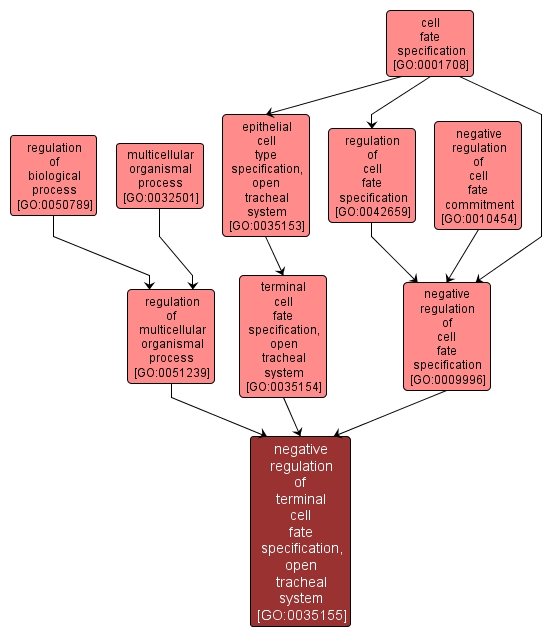GO TERM SUMMARY
|
| Name: |
negative regulation of terminal cell fate specification, open tracheal system |
| Acc: |
GO:0035155 |
| Aspect: |
Biological Process |
| Desc: |
Any process that restricts, stops or prevents a cell from adopting a terminal cell fate in an open tracheal system. Once the terminal and fusion fates have been correctly induced, inhibitory feedback loops prevent the remaining branch cells from assuming similar fates. |
Synonyms:
- inhibition of terminal cell fate specification
- down regulation of terminal cell fate specification
- down-regulation of terminal cell fate specification
- negative regulation of terminal cell fate specification
- downregulation of terminal cell fate specification
|
|

|
INTERACTIVE GO GRAPH
|














